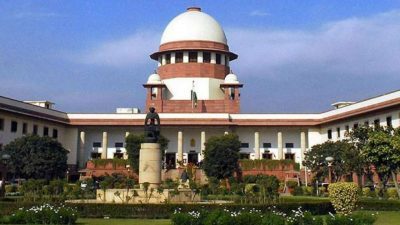
Govt’s Rafale defences crumble as SC admits ‘leaked docus' as proof

An old man once woke up from sleep and started screaming that a rat had just passed over his stomach. When his family asked what the racket was all about since it was just a mouse, the man replied: “You idiots don’t understand. My stomach has now become a thoroughfare. Today a rat used it, tomorrow a lion may decide to pass over it.”
The Rafale deal isn’t a joke. But a similar logic could be applied to the Supreme Court’s decision on Wednesday (April 10) to examine ‘leaked’ classified documents to see if there was corruption in the purchase of fighter jets from the French aviation company, Dassault.
Considered alone, the court’s decision to reject the government’s argument that these documents are inadmissible since they have not come from a legitimate source isn’t a big victory. But, it heralds the beginning of a process that could lead to a serious examination of the Rafale deal, something the government has been reluctant to discuss citing ‘national security.’
Unlike the imagined fear of the old man’s stomach turning into a busy street, the real consequences of the SC decision could be embarrassing for the Narendra Modi government. The impugned papers, part of journalist N Ram’s investigation into the deal, support three important allegations: One, the prime minister’s office held parallel negotiations with the suppliers. Two, the price of the fighter jets is much higher than the deal negotiated by the Manmohan Singh government. Three, several clauses — like the requirement of a bank guarantee — were either altered or waived to ensure Anil Amabani’s Reliance Defence is selected as an offset partner of the French aviation company.
Former union ministers Yashwant Sinha and Arun Shourie, and lawyer Prashant have sought a review of an earlier SC decision to not examine the deal. The petitioners have argued that the documents be treated as fresh and incriminating evidence. Since the government has accepted that the documents are not forged but photocopies, the court has to no longer worry about its authenticity. It just needs to examine them for evidence of corruption in the deal. If it finds enough material to support the petitioners, the court could order a review or a probe. On Wednesday, the court said it will announce a separate decision on the admissibility of the review petition.
For the moment, the decision implies three things: One, details of the Rafale deal can’t be hidden on the pretext of national security. Two, any evidence, regardless of the source, is admissible in a court. And three, freedom of the media can’t be curtailed with threats of criminal action or by invoking the official secrets act. In short, the government can’t run from questions.
In the middle of a general election, the SC decision would, of course, give the opposition a new weapon to attack the government. The Congress, especially, had built its campaign on two slogans — the promise of NYAY (justice through guaranteed minimum income to India’s poor) and Chowkidaar chor hai (the watchman is a thief).” The BJP had so far countered the chowkidaar barb by arguing that the SC had vetted the Rafale deal and given a clean chit to the government. The latest decision would help the opposition claim victory.
This was evident when Congress president Rahul Gandhi cleverly argued that NYAY (justice) has finally been done. At a press conference after filing his nomination from Amethi, Gandhi said, “The Supreme Court has accepted that there was corruption in Rafale and that the Prime Minister has given Rs30,000 crore to Anil Ambani.”
Several opinion polls suggest the Rafale allegations have had some impact on the ground. A CSDS survey past week found that among those who had heard of the allegations of wrongdoing, 41 per cent believed them to be true against 37 per cent who did not.
The SC decision would give the Congress reasons to shout louder that now even the SC smells a rat in the deal.

